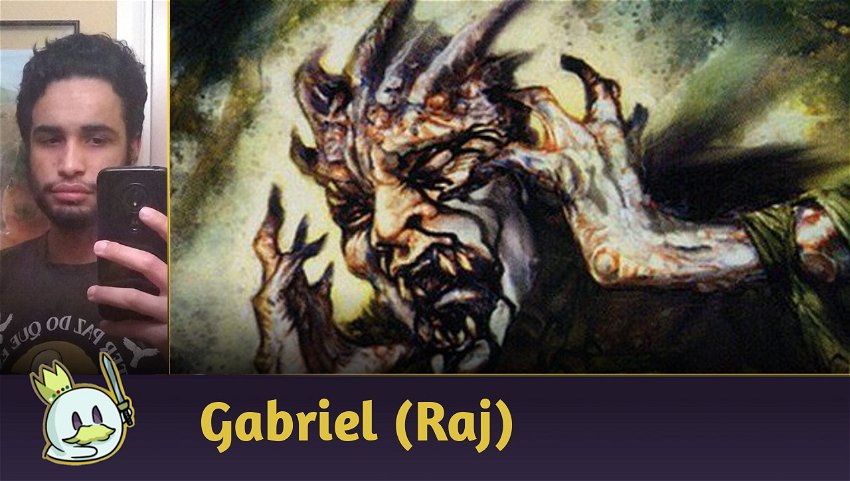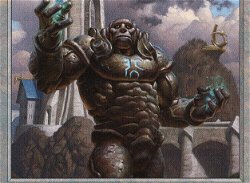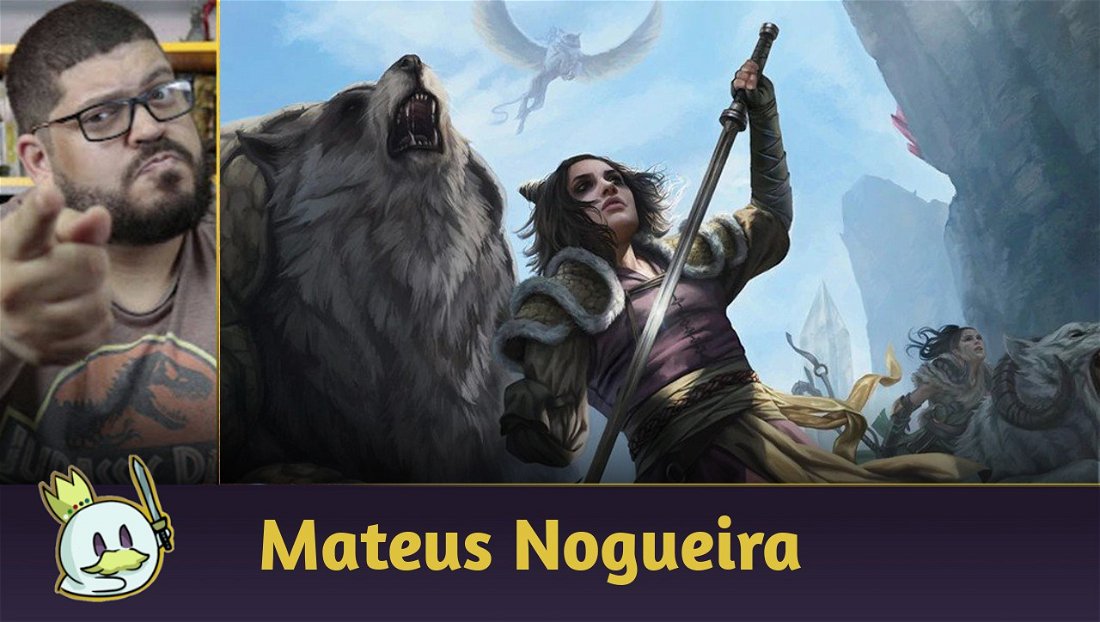Introduction
Today we'll discuss a deck that made me start in Legacy in 2017, my pet deck even today, loved by some, hated by many.
This deck is commonly known as a slow killer, as it wins hitting with a land called Mishra's Factory or with Nether Spirit, but it can also close out games with a few The Rack.
Today, I'll present it to you and maybe make you fall in love (or not) with it. Let's move on to getting to know this deck, which evolved slowly and gradually!
Getting to Know the Deck
Well, let's talk a bit about how this deck used to be and how it is today. Its evolution was slow for quite some time, as before it focused on bringing a Dark Ritual onto a Thoughtseize + Hymn to Tourach, to mine the resources in your opponent's hand.
It also destroyed their lands with Wasteland for the non-basic and Sinkhole for the basic ones, ending their possible plays, besides playing a few Smallpoxs and then Pox right afterward to make your opponent's life points really low. Then, the idea is to close out the game slowly by hitting with Mishra's Factory and Nether Spirit or even The Rack. This was how this deck was at the beginning.
Basically, it is characterized as a Prison deck, but unlike its "brother", the Mono-Red Prison, which focuses on playing Chalice of the Void for 1, Trinisphere or even a Blood Moon to lock down your opponent's plays, Pox focuses on a rather unusual concept for most decks: card disadvantage. This concept consists of, throughout the game, you having less resources to use; which for this deck is an "advantage".
However, with the sets that were released, Pox started to get more relevant cards for this strategy — as for instance Liliana of the Veil and further on Liliana, the Last Hope. But the ones that are more present in the deck today are Karn, the Great Creator and Urza's Saga because they gave it more ways of closing out the game.

Today the most relevant cards in the deck are Karn, the Great Creator, Liliana of the Veil and Urza's Saga because while both planeswalkers set the lock, Liliana disrupts the opponent's hands and Karn disrupts the lands with Liquimetal Coating, Urza's Saga starts creating more resources for you, which in case are the Construct tokens and the artifacts it tutors when it leaves the board.
Deck's Build
The natural trend for the deckbuilding here is to build it more focused on cards which were used before (The Tabernacle at Pendrell Vale, Chains of Mephistopheles, Nether Void and The Abyss), but given it has access to more proactive cards, it can become more like Mono-Red Prison, in the sense it closes out the game faster than before.
Cards such as Urza's Saga, Karn, the Great Creator + Mycosynth Lattice and Liliana of the Veil, which set the necessary clock and are essential cards to finish the game.

Hand disruption cards also help this strategy, such as Thoughtseize, Hymn to Tourach and Smallpox. Today we don't use the card which gives this deck its name, Pox, because it is already relatively outdated.
Decklist Pox (8-rack)
The Decklist we'll use is from John Zug, which played it at the 2K Dragon Master Games (Binghamton, NY).
As we can see, this deck causes the following first reaction: Wait? No creatures, how do you win?
And that's where the magic happens. "Winning by exhaustion". That's why so many hate it, but some love it.
P.S.:Considering many Initiative decks have grown lately, specially Mono-White Initiative, two interesting cards to use in the sideboard are Tourach, Dread Cantor and Dauthi Voidwalker. But adapt it depending on your metagame.
Playstyle
The deck's simple plan is: lock down your opponent and close it out with Urza's Saga Constructs or Karn, the Great Creator + Mycosynth Lattice.
However, as we can see, it doesn't protect itself well against creature decks, which might make it more difficult.
It is a strategy to place your opponent at their resource limit, and of course, you also run out of resources too, but it is more advantageous to you.
Mulligan
Thinking of that, this deck's keep will be your main priority. The initial plays are the most important ones. So, having 7 cards in hand with no actions in the first rounds is bad. Mulliganing will be a good choice.

The ideal keep for this deck has 2 lands (ideally 1 Swamp and 1 Urza's Saga), 1 Dark Ritual, 1 Thoughtseize, so you can get information on the opponent's deck, 1 Hymn to Tourach, so you can disrupt, 1 Liliana of the Veil, so you can stall the game, and if it is a 7 card keep, 1 Sinkhole or Smallpox, so you can disable your opponent's mana development soon.
Building your Sideboard
Going over to the sideboard, we can place cards that are good against fast graveyard combos, such as Leyline of the Void and Faerie Macabre, besides Leyline itself already being part of "the combo" this deck can end up having with Helm of Obedience being searched for with Karn, the Great Creator.
Cards that may end up being important against meta decks such as Mono-White Initiative, Death and Taxes and Elves are Plague Engineer and Tourach, Dread Cantor because they prevent these decks from developing a bit.
And as we mentioned, for Karn, the Great Creator, we need to have a "toolbox". Besides Helm of Obedience, we have Mycosynth Lattice as a lock and finisher, Ensnaring Bridge for very aggressive decks such as Elves and Goblins, Liquimetal Coating for the land lock, and Pithing Needle for combos with Griselbrand or Thespian's Stage.
Sideboard Guide
VS Mono White Initiative
As we know, this is a deck that gained a lot of space in the MTGO (Mol)'s leagues and has also gained space in physical matches. For it, we have cards that may be relevant, as we can act with the combo of Leyline of the Void and Helm of Obedience.
In:

Out:

VS 8-Cast
This deck presents us a problem which, in case it was a Mono-Red Prison, would be the same as Chalice of the Void for 1.
The strongest plays we can do early on are thanks to Dark Ritual speeding up our mana and Thoughtseize + Hymn to Tourach. So if we're in the draw, the ideal is to let go of using Dark Ritual and maybe Thoughtseize. If we're in the play, we can even leave these cards.
Comes in at Draw:

Out at Draw:

Comes in at Play:

Out at Play:

VS UR Delver
Cards such as Delver of Secrets and recent additions of Dragon's Rage Channeler and Murktide Regent have always been problematic for this deck, even more so when there's also the whole apparatus of free counters and direct damage to help close out the game.
Besides it also being a full card advantage deck, something that for us can become problematic, though our deck is prepared to deal with that.
In:

Out:

VS UB Shadow
Against Shadow, due to its strategy being around health loss, so it can finish with Death's Shadow, our deck finds it easy to play against, though it has the same problems as UR Delver, aside from not having direct damage and the Dragon's Rage Channeler's to speed up a Murktide Regent.
In:

Out:

VS Depths decks
Depths decks are another case that it will be easy to play against, as Karn, the Great Creator at turn 1-2, bringing an Ensnaring Bridge or even a Pithing Needle already helps our game progress significantly.
But always keep in mind that post-side, our opponent might add in Force of Vigor to deal with these threats of ours. We only swap a few cards, no need to overdo it.
In:

Out:

VS Death and Taxes
Based on the fact this deck is monocolored, as ours is, and it has tools which are similar to ours (Wasteland), we have a line of what can be done regarding the sideboard.
In:

Out:

VS Reanimator
A graveyard combo deck, relatively hard at game 1 because you'll have to burst the Smallpoxs much earlier than we should need to, and playing a Hymn to Tourach becomes really bad, as it speeds up their combo.
So, we bring these cards for game 2 and plenty of prayers because depending on their version, we might see an Iona, Shield of Emeria.
in:

Out:

VS Cephalid Breakfast
Cephalid is a deck that has been gaining a lot of space in tournaments, being a combo centered around Nomads en-Kor + Cephalid Illusionist, so it can self-mill and win against Thassa's Oracle.
It's almost the same reasoning as against Reanimator, only here discards won't be harmful.
In:

Out:

Final Thoughts
Well, this ends it! Definitely, this was the deck that got me started in this format. See you next time!
Any questions or suggestions, I'm available in the comment section.















— Comments 0
, Reactions 1
Be the first to comment